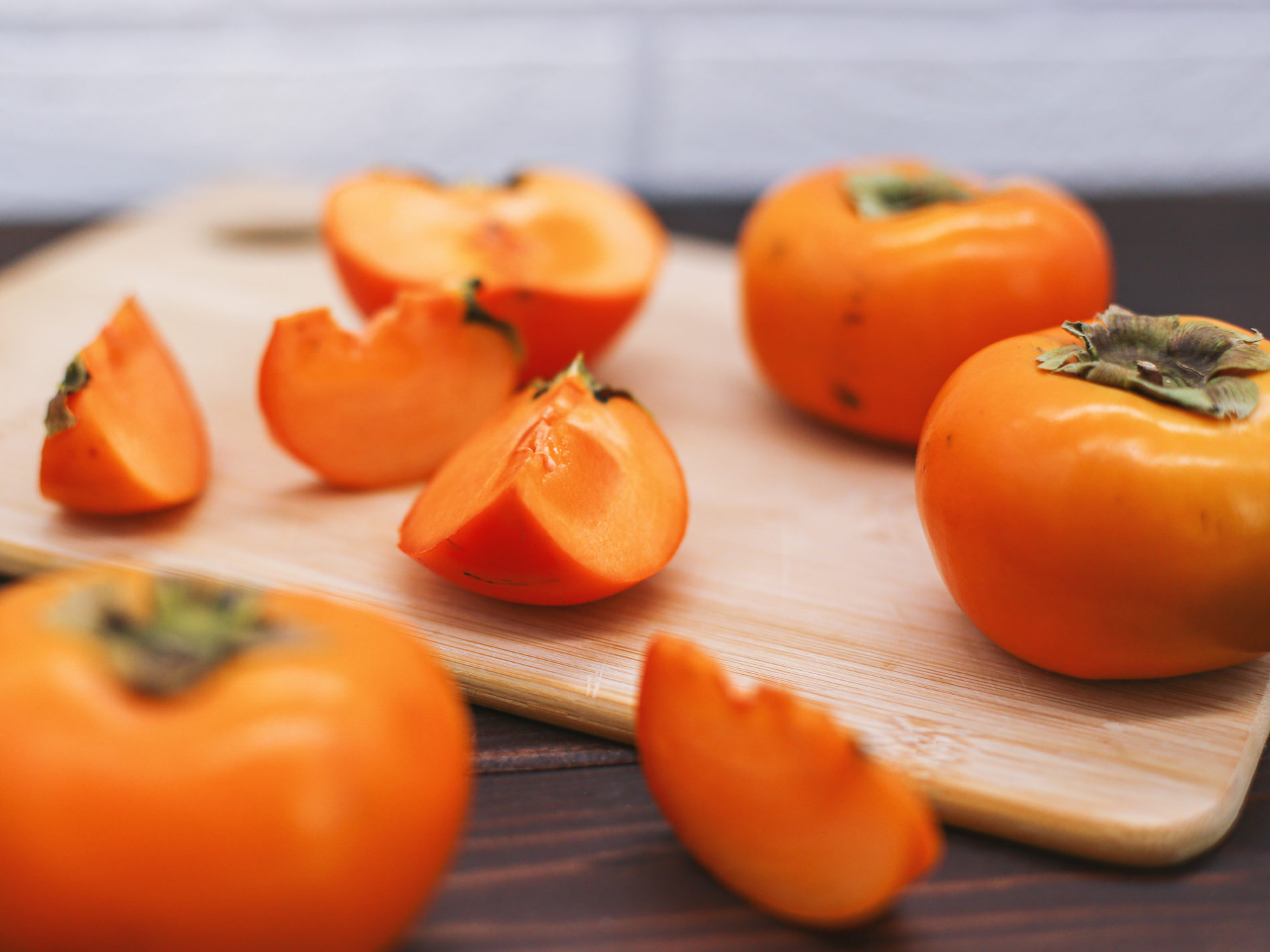Persimmon is a widely cultivated fruit from the plant of the Diospyros genus which in popular etymology means “the divine fruit” or “Zeus wheat”. Unfortunately, “popular” often happens to be fake, and this seems to be the case. Nevertheless, the flavour of the fruit sometimes is so good, practically close to the divine, that we decided to leave the laymen interpretation here. At the same time, of course, it should be recognized that the fruit oftentimes appears to be dryish, sour, astringent – no wonder that “persimmon” in one of the indigenous North American languages means “a dry fruit”.
The most commercially important species of persimmon is Diospyros kaki (it’s also called Oriental/Chinese/Japanese or even kaki persimmon). It’s actually the very reason why you would hear the word “kaki” when someone refers to the fruit. The good news is that kaki is what Japanese call persimmons, so there is at least one product that you would be able to buy in Japan without a translation app.
Have you ever noticed that when fully ripe, persimmon becomes sort of a jelly encapsulated inside the fruit’s cells. Magnificent, lush, juicy, sweet – these fruits are notoriously tasty. There are non-astringent varieties that are called chocolate, brown sugar, cinnamon, or mango persimmons. They are eaten soft and are especially praised for their distinct flavours. There are also astringent varieties that are usually dried: fruits are peeled, blanched, and attached to a string where they are hung until wrinkled and covered with noble white taint. But it’s not mold as some of you might presume. It’s small sugar crystals that came out of the fruit during drying – this appearance is what gives the fruit its recognizable look. In Korean cuisine, for instance, dried persimmon, known as gotgam there, can be eaten wrapped around a walnut or stuffed with smaller pine nuts. You should definitely try to find this thing and give it a try. Eat as is, chop into granola or porridge, stir into rice puddings or pilaf, add as a sweet note to salads and salsas.
However, if you can’t find the dried version, try to kaki your life with the fresh one. Compliment bresaola, jamon, prosciutto meat plates with persimmon bites, like you would normally do with sweet melon. Another great thing is persimmon and brie crostini. Take little bread slices, put some soft brie and the fruit on top, then turn on a broiler in your oven and give them a good old 200˚C / 400˚F. A perfect melt. And the last but not the least recipe is a persimmon compote. Pour 1 cup of dry white wine in a pan, add ½ cup of sugar, 1 cinnamon stick, 1 star anise, and a pinch of salt. Bring the mixture to a boil, reduce heat and simmer for 10 minutes until thickened. Add 4 peeled and chopped kakis to the pan and continue cooking for 20 more minutes, until syrupy. Transfer everything to a bowl, cool in a fridge. When ready to rock, serve over ice cream, feel great.











What do you think?